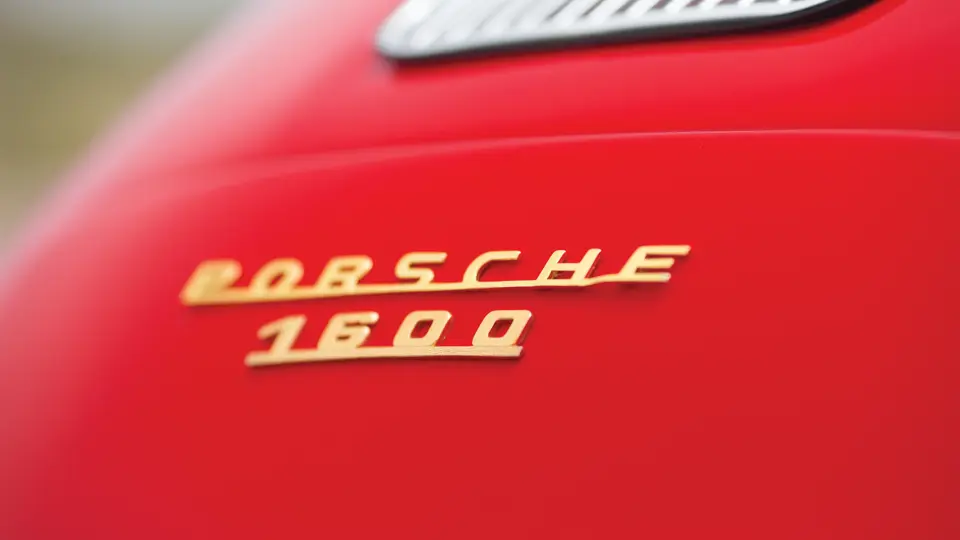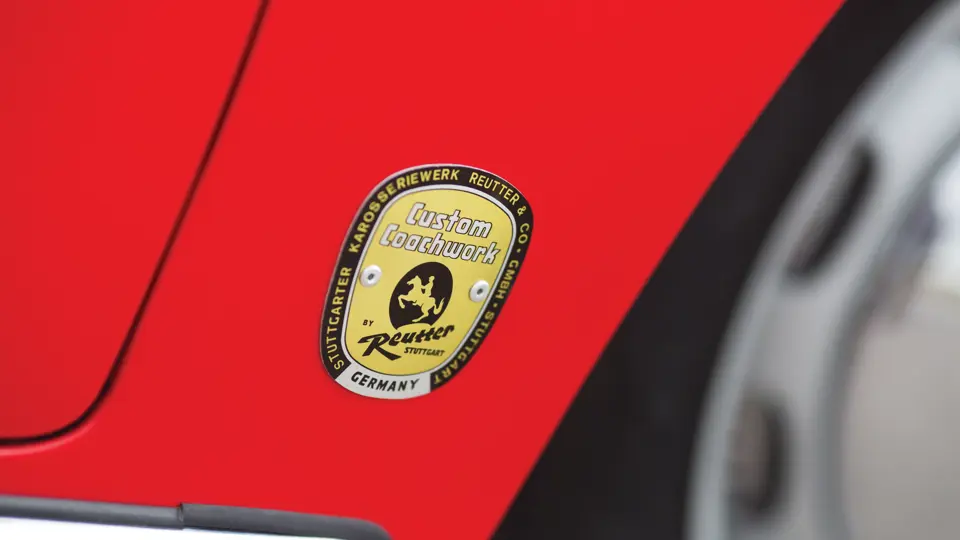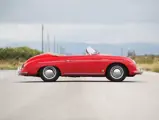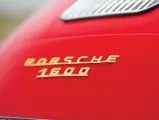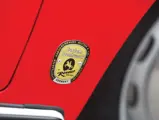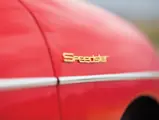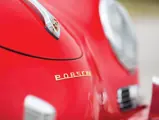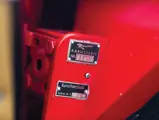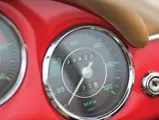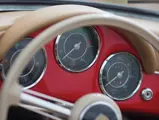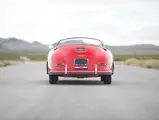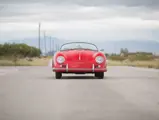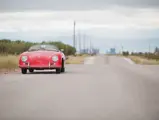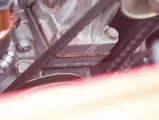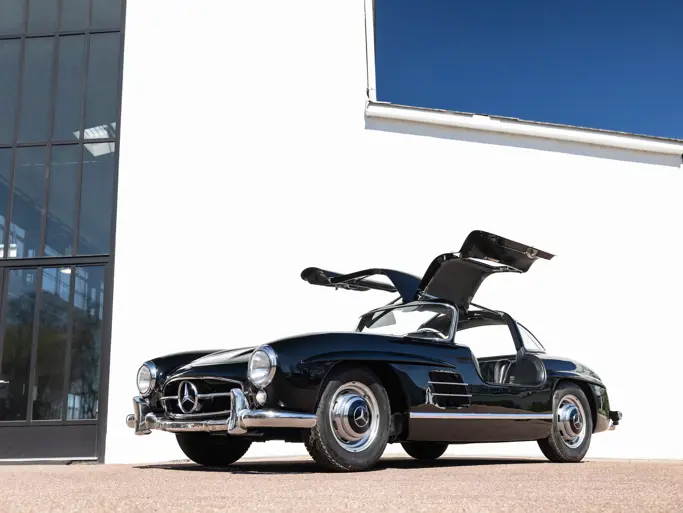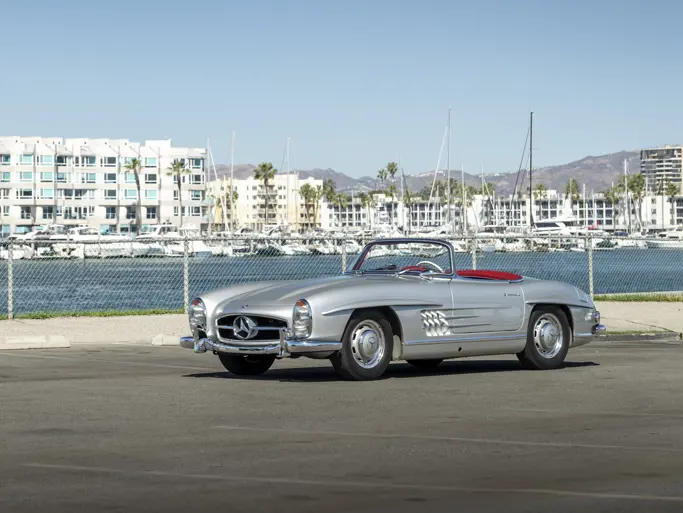60 hp, 1,582 cc OHV air-cooled horizontally opposed four-cylinder engine with dual Zenith carburetors, four-speed manual transmission, independent front suspension with laminated torsion bars, parallel trailing arms, and tubular shock absorbers, independent rear swing axles with torsion bars and tubular shock absorbers, and four-wheel hydraulic drum brakes. Wheelbase: 82.7 in.
Porsche’s iconic 356 Speedster first appeared in 1954, after U.S. distributor Max Hoffman convinced the factory that it needed a product with which to compete with lower-cost British imports. What Porsche delivered was a bare-bones roadster with a base price of just under $3,000, which was exactly what Hoffman needed to get customers in the door. Unlike the luxurious 356 Cabriolet, with its fixed windshield and numerous comfort features, the Speedster was very basic, with side curtains instead of roll-up door glass, a removable windshield, ventilated thin-shell non-reclining bucket seats, and little else.
It was a true dual-purpose sports car. Owners could readily use their Speedsters for every-day transportation and then drive to the track on weekends, remove the bumpers, top, windshield, floor mats, and other trim, tape on some numbers, and go racing. Speedsters offered excellent performance due to their light weight, and they soon established themselves as the cars to beat. They were well-built, reliable, and great fun to race. Speedsters remained competitive well into the 1970s and 1980s, winning many national championships in the U.S. and Europe. By the time T2 Speedster production wound down in 1958, only 1,129 examples had been built, and that group is considered to be the most modern and drivable today.
This very pretty 1958 Speedster has benefitted from a prior cosmetic and mechanical restoration, and its engine compartment has recently been detailed. It wears a California “black plate” and is presented in period-correct Signal Red (601) paint. Its lightweight Speedster seats are upholstered in tan leatherette, as is the rest of the interior, which is complemented by tan German square-weave carpeting. It has a matching tan fabric folding top as well as a tan top boot. Its paint and brightwork are described as excellent, and the consignor states that all the body panels are original to the car, which is verified by the three-digit numbers that appear on the inside of both doors, the front trunk lid, and the engine cover.
It is powered with a period-correct, 60-horsepower 1600 Normal four-cylinder engine that has been completely rebuilt, fitted with correct date-coded Zenith carburetors, and is described as being in good running order. The transaxle has also been replaced. Finally, the Speedster is fitted with chromed steel wheels, and it retains an original deluxe steering wheel.
Speedsters of all years have become highly collectible in recent years, and with a limited number of good examples available, demand has grown steadily. Here is a nicely restored Speedster that is perfect for club shows or enjoyable top-down weekend touring. It is supplied with its original books and tool kit, as well as a Certificate of Authenticity.

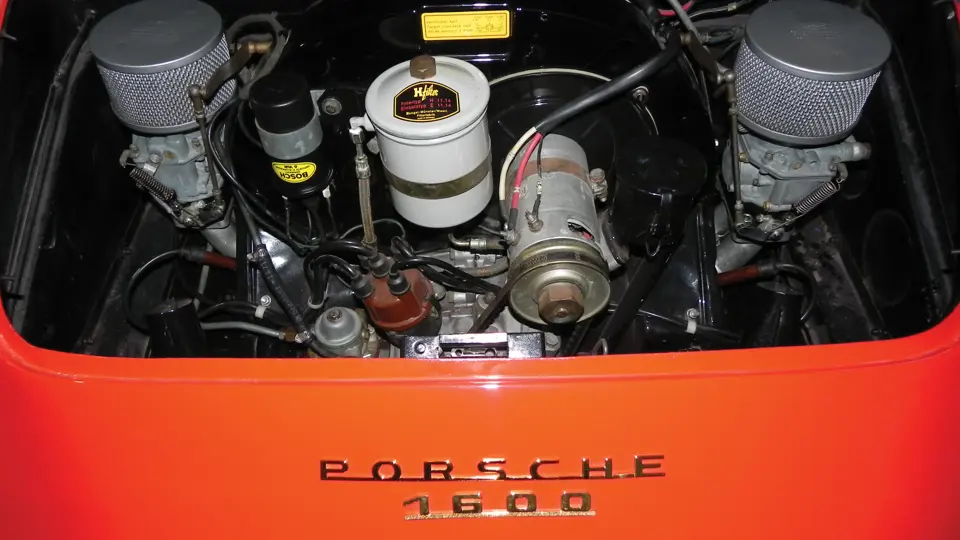
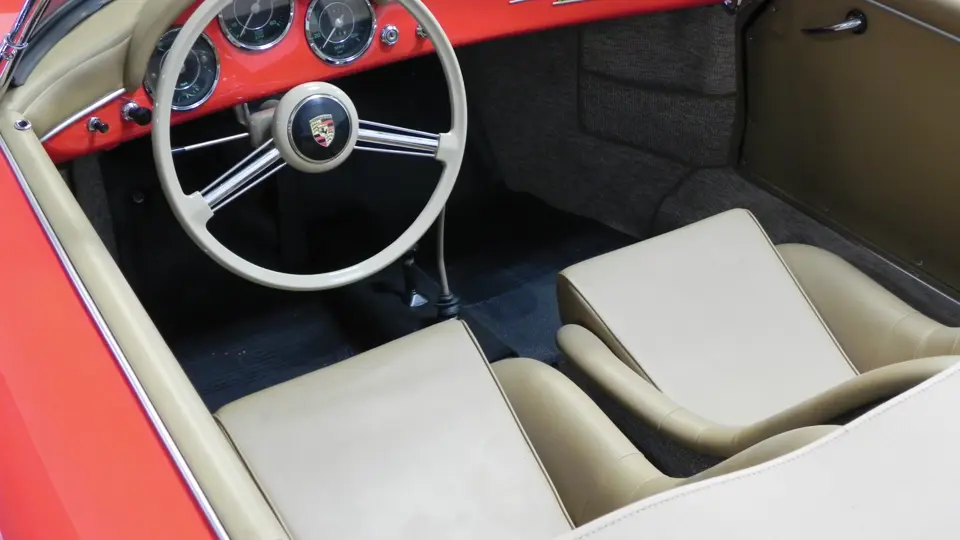

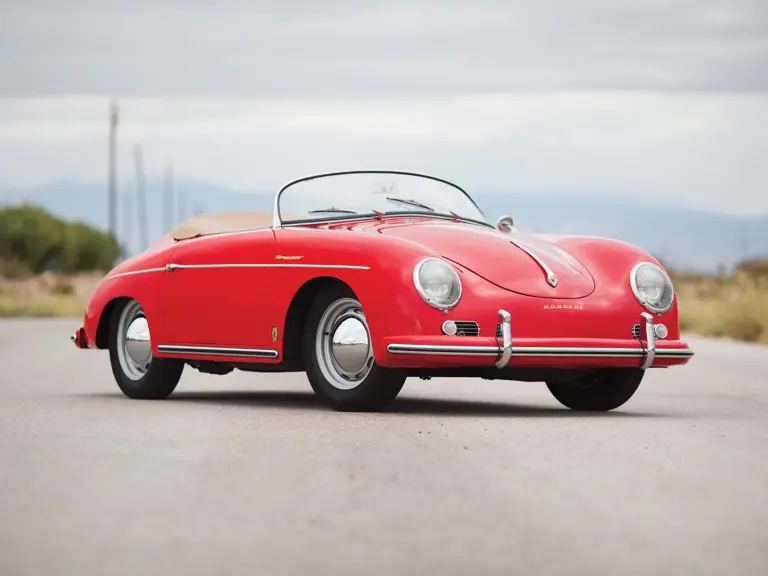
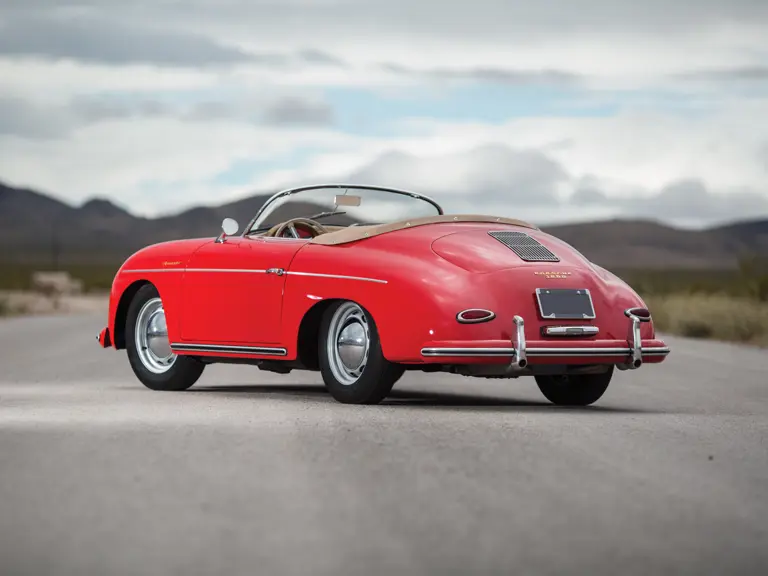
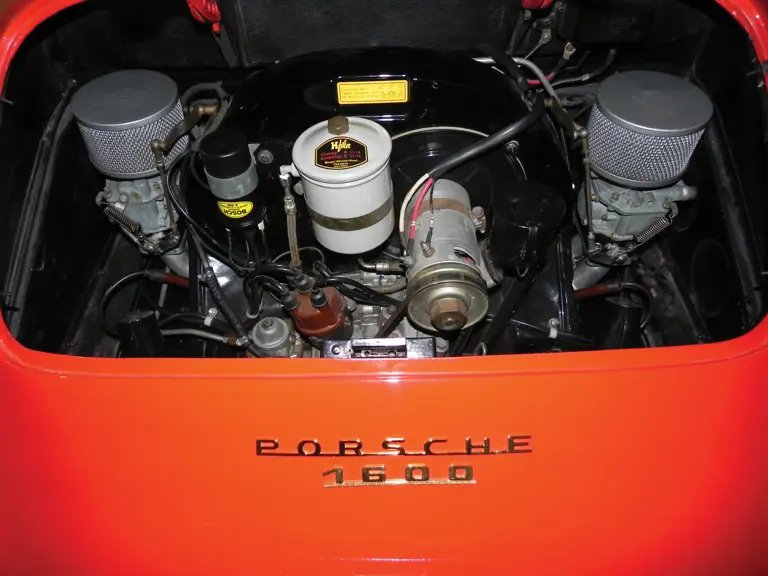
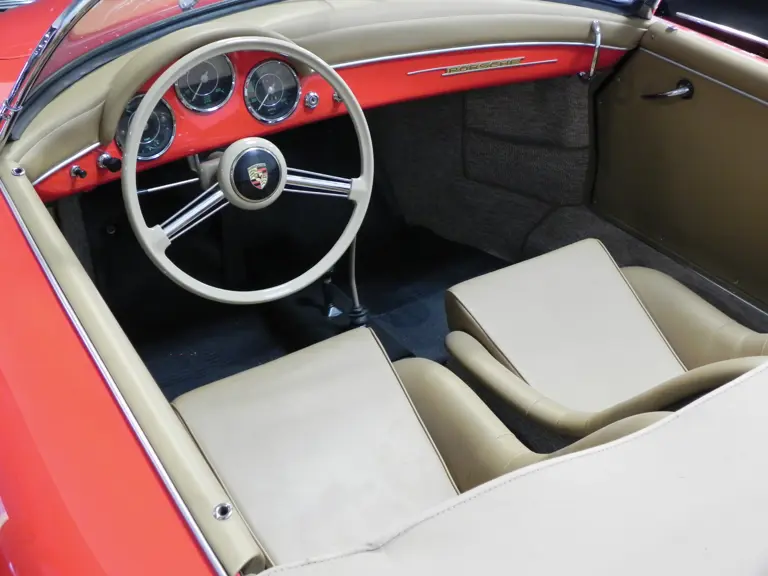
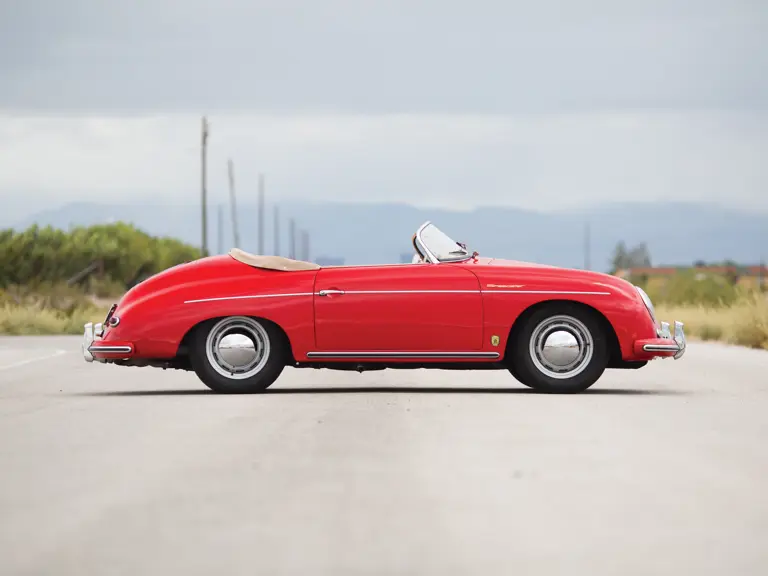
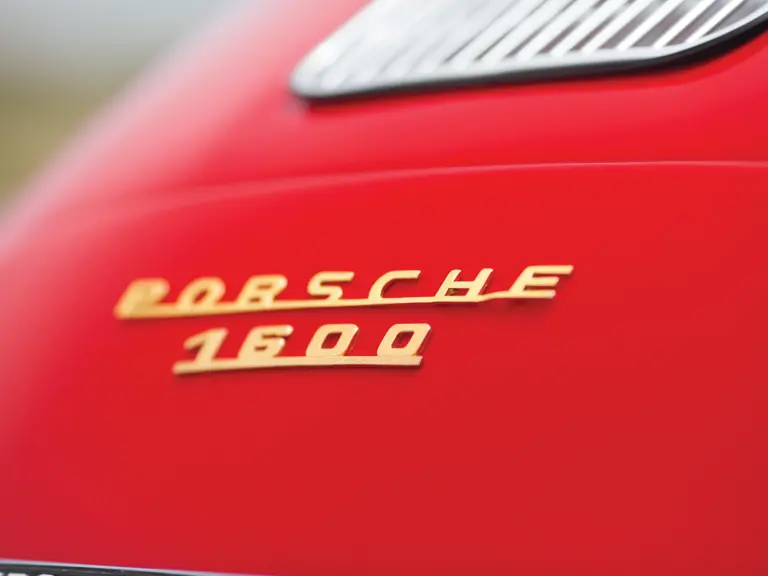
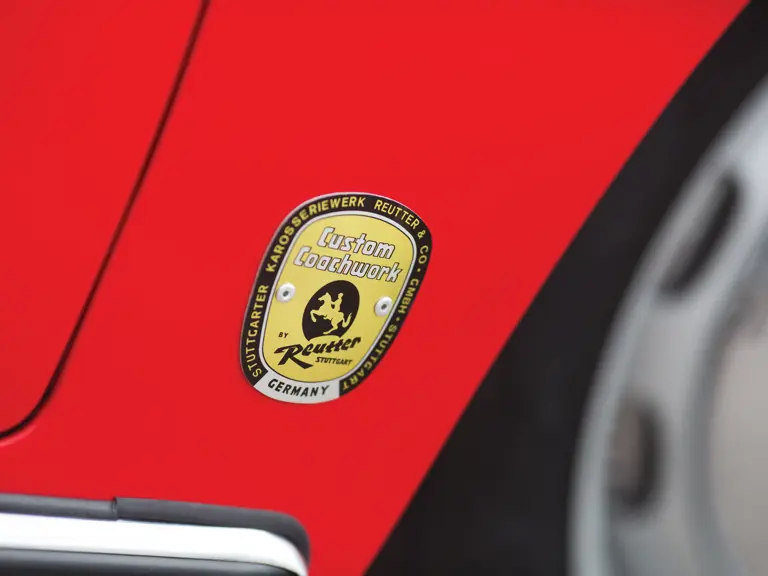

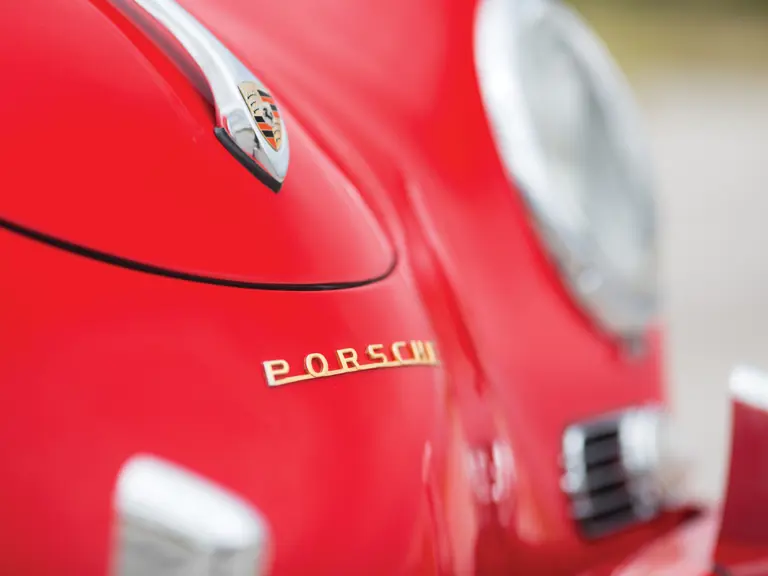
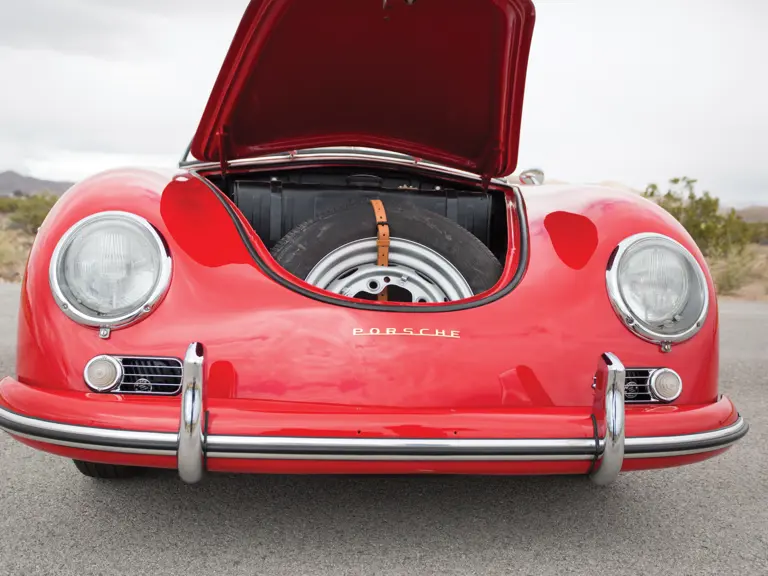
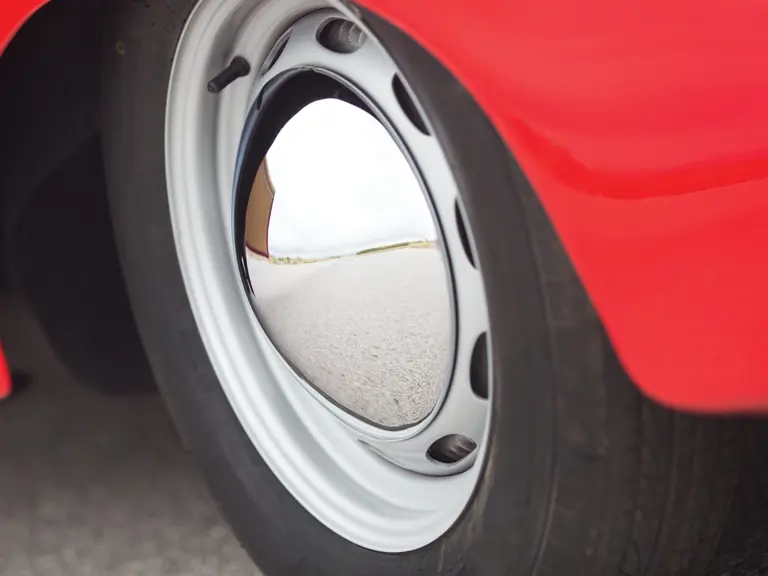

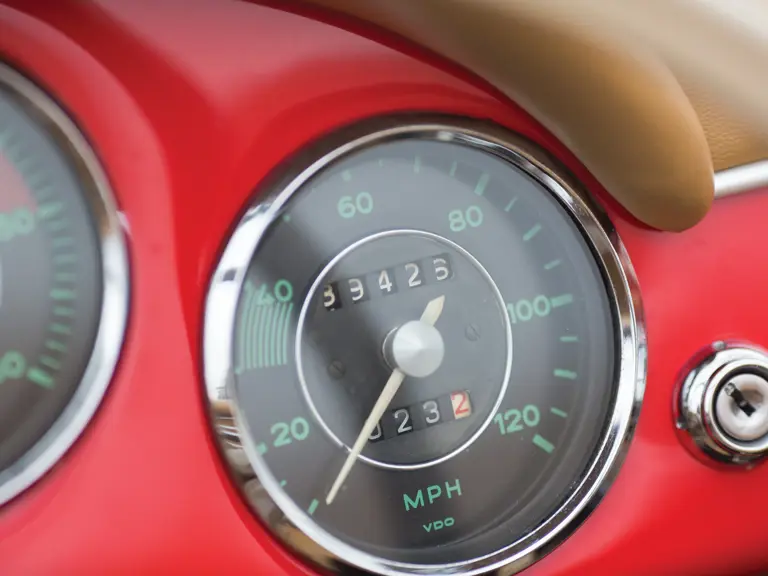
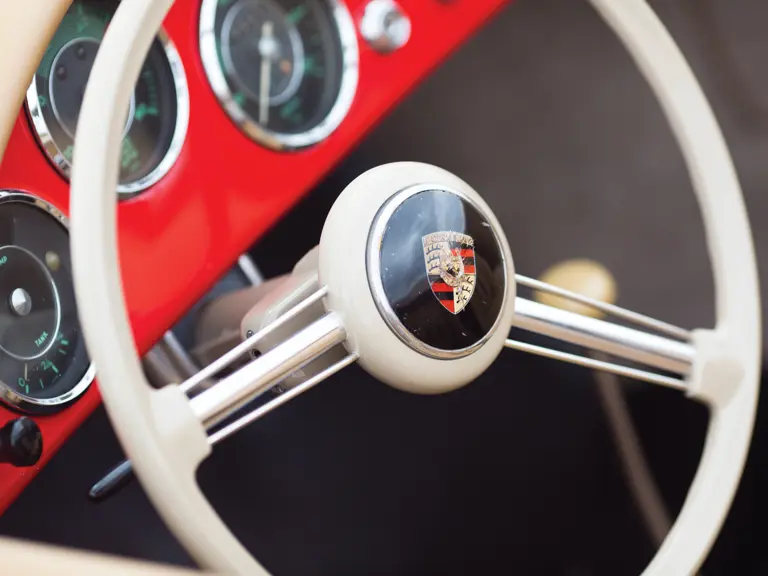
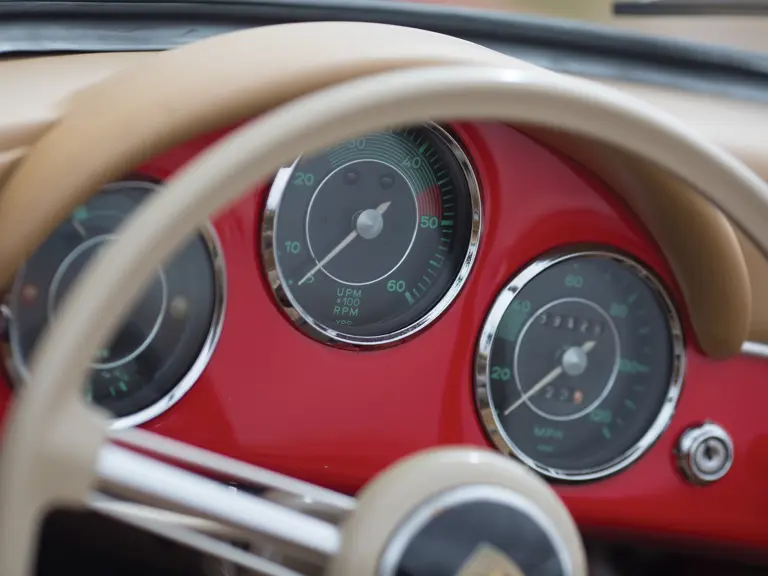
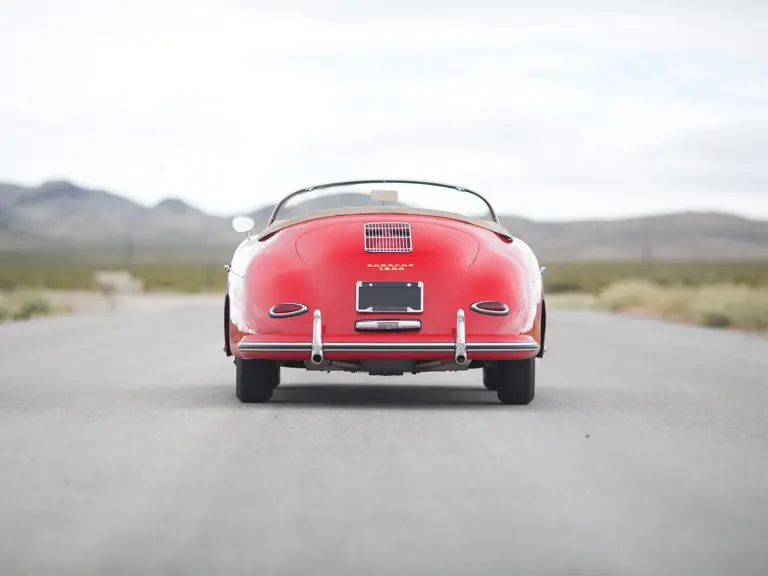
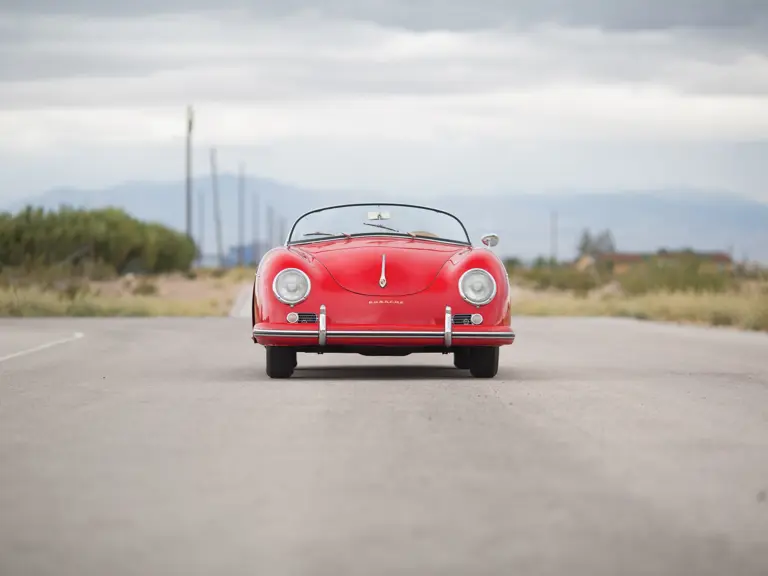
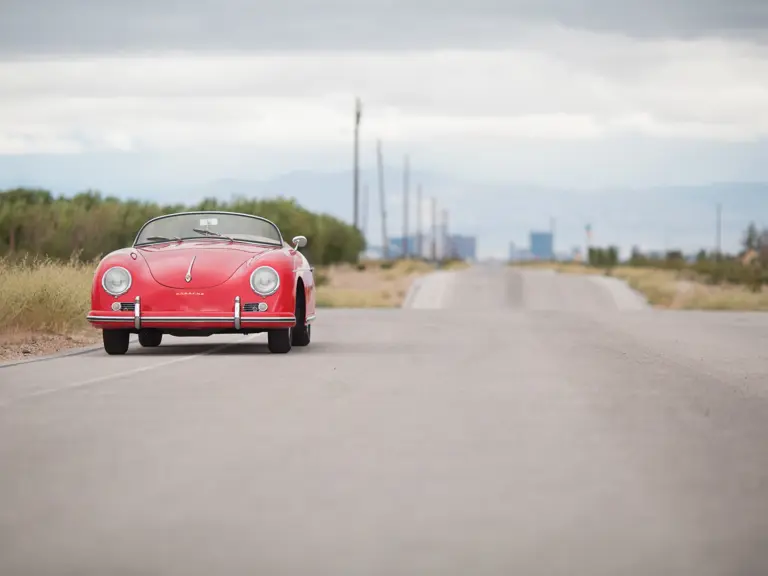

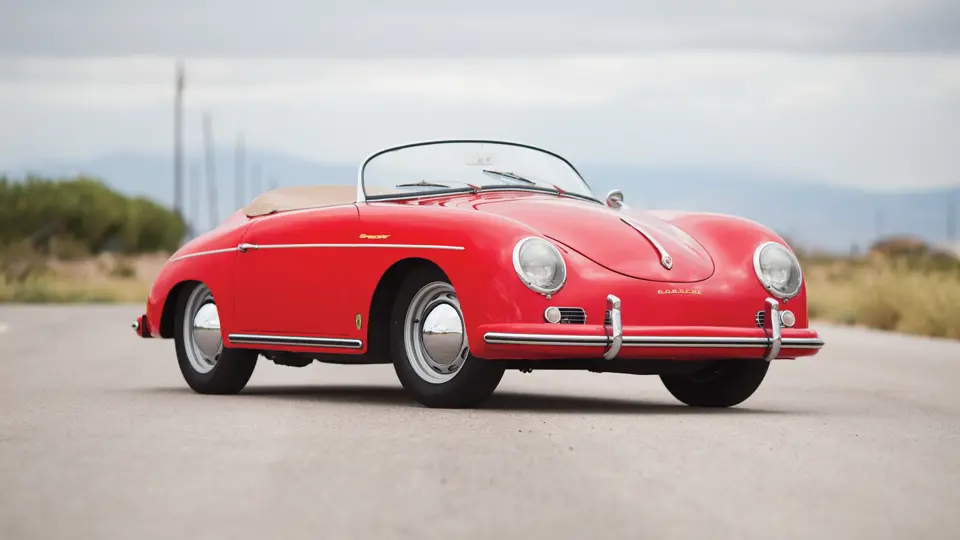
 | Amelia Island, Florida
| Amelia Island, Florida

